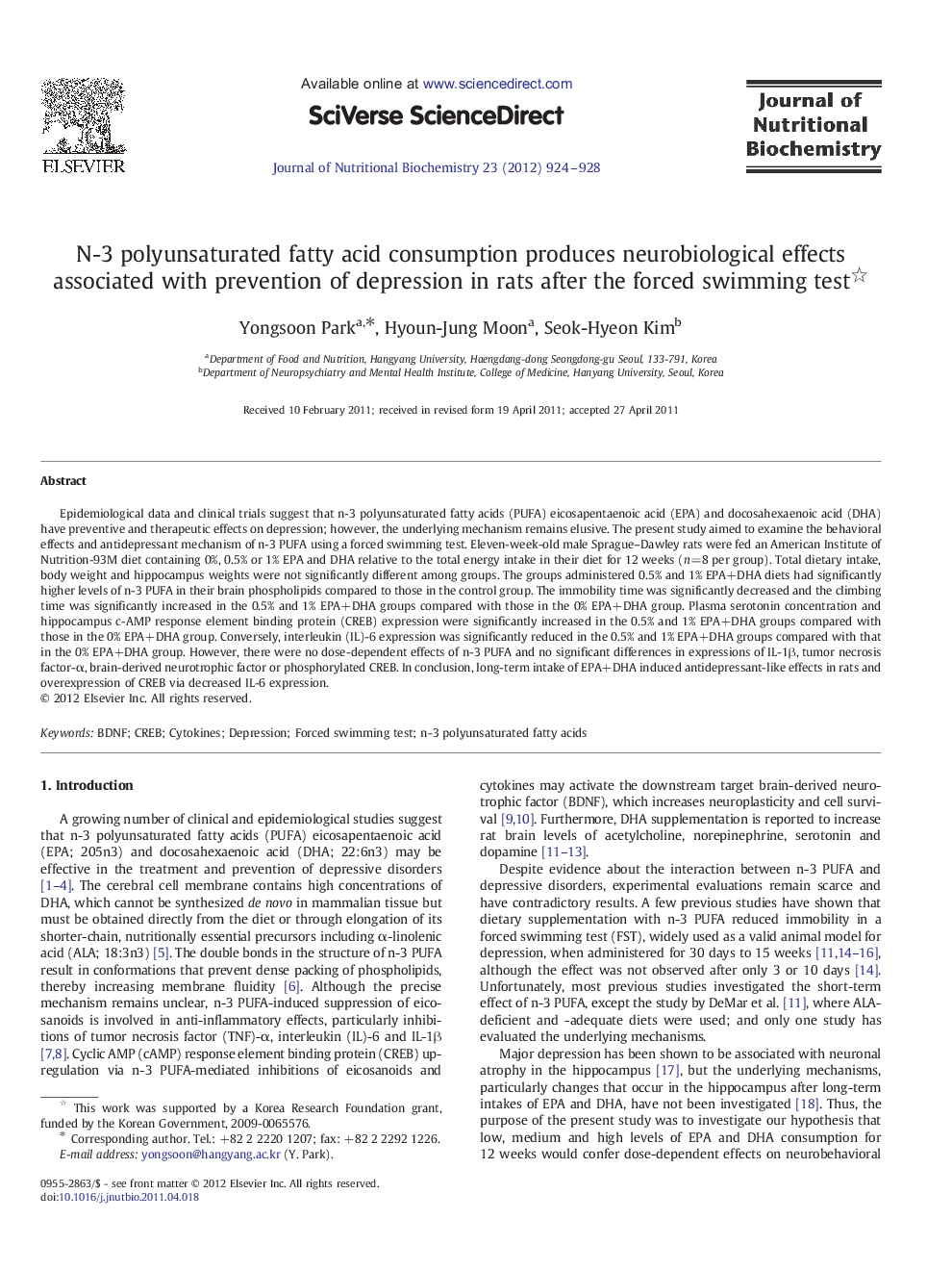| Article ID | Journal | Published Year | Pages | File Type |
|---|---|---|---|---|
| 1989833 | The Journal of Nutritional Biochemistry | 2012 | 5 Pages |
Epidemiological data and clinical trials suggest that n-3 polyunsaturated fatty acids (PUFA) eicosapentaenoic acid (EPA) and docosahexaenoic acid (DHA) have preventive and therapeutic effects on depression; however, the underlying mechanism remains elusive. The present study aimed to examine the behavioral effects and antidepressant mechanism of n-3 PUFA using a forced swimming test. Eleven-week-old male Sprague–Dawley rats were fed an American Institute of Nutrition-93M diet containing 0%, 0.5% or 1% EPA and DHA relative to the total energy intake in their diet for 12 weeks (n=8 per group). Total dietary intake, body weight and hippocampus weights were not significantly different among groups. The groups administered 0.5% and 1% EPA+DHA diets had significantly higher levels of n-3 PUFA in their brain phospholipids compared to those in the control group. The immobility time was significantly decreased and the climbing time was significantly increased in the 0.5% and 1% EPA+DHA groups compared with those in the 0% EPA+DHA group. Plasma serotonin concentration and hippocampus c-AMP response element binding protein (CREB) expression were significantly increased in the 0.5% and 1% EPA+DHA groups compared with those in the 0% EPA+DHA group. Conversely, interleukin (IL)-6 expression was significantly reduced in the 0.5% and 1% EPA+DHA groups compared with that in the 0% EPA+DHA group. However, there were no dose-dependent effects of n-3 PUFA and no significant differences in expressions of IL-1β, tumor necrosis factor-α, brain-derived neurotrophic factor or phosphorylated CREB. In conclusion, long-term intake of EPA+DHA induced antidepressant-like effects in rats and overexpression of CREB via decreased IL-6 expression.
